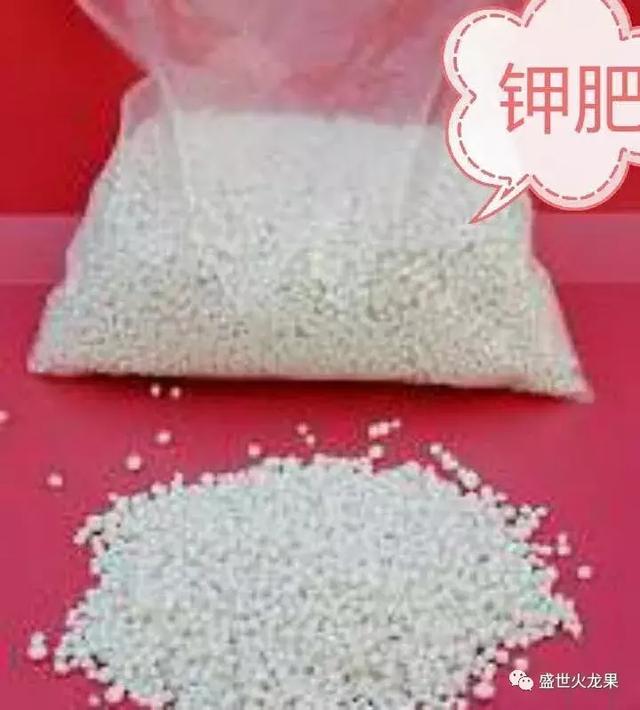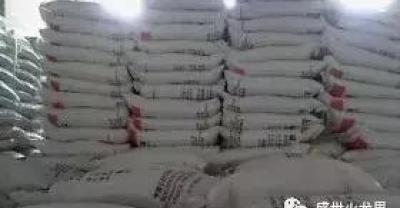A simple method for distinguishing between true and false chemical fertilizers
Author: Shengshi fire dragon fruit
Editor's note: as the saying goes, "A banker with a flower depends on fat to run the house." In agricultural production, chemical fertilizer is essential. The use of chemical fertilizer can not only improve soil fertility, but also provide nutrients needed by crops, improve crop quality and increase crop yield.

At present, there are many chemical fertilizer manufacturers in the market, and there are various kinds of chemical fertilizers. There are many fake and shoddy chemical fertilizers flooding the market, and farmers' friends are often cheated. Therefore, for farmers, we also need to know some simple methods to distinguish between true and false chemical fertilizers.
So, today, the editor will give you some simple ways to identify the true and false of chemical fertilizer.
The method to distinguish the true and false of chemical fertilizer is summarized as "five look, one smell and one touch".
Look at packaging, color, shape, solubility and hygroscopicity
Look at the packaging: when buying fertilizer, first look at the fertilizer packaging. Fertilizers produced by regular manufacturers are generally marked with production licenses, registration licenses, implementation standards, product names, manufacturers, factory addresses, trademarks, nutrient content, net weight, etc., and their outer packaging is standardized and strong; the outer packaging of fake and shoddy fertilizers is generally rough, poor quality, easy to be broken and leaked, and the information on the packaging is unclear and incomplete.
Look at the color: different fertilizers have their own unique colors, which can be used to distinguish between true and false. Several common chemical fertilizer color recognition: nitrogen fertilizer is almost all white (except lime nitrogen), some slightly yellowish brown or light blue (except those who add other ingredients); potash fertilizer is mostly white crystals, such as potassium dihydrogen phosphate is white, but potassium fertilizer containing more potassium is reddish brown; phosphate fertilizer is mostly gray powder, such as calcium superphosphate is gray, diammonium phosphate is brown, and so on.
Look at the shape: the particle size of general high-quality chemical fertilizer is uniform, the surface is smooth, and the particle size and specific gravity are uniform. The particle size of fake fertilizer is uneven and the surface is rough.
Look at the solubility: take 1g of chemical fertilizer, put it into a clean glass, add 10ml clean distilled water (or cold boiled water), shake fully, see how it dissolves, all dissolve is nitrogenous fertilizer or potash fertilizer, while phosphate fertilizer is only partially soluble in water or insoluble in water, in which calcium superphosphate dissolves in water but has residue and produces sour taste. Ammonium bicarbonate is soluble in water but with a strong smell of ammonia, while insoluble in water but produced by bubbles and smelling of calcium carbide chlorine is lime nitrogen.
Look at the hygroscopicity: in order to maintain the efficiency of chemical fertilizer, manufacturers usually change the hygroscopicity of chemical fertilizer through certain processes in the process of chemical fertilizer production. High-quality chemical fertilizers are generally not easy to absorb moisture and caking (except for exposure to sunlight, moisture and water), while the phenomenon of moisture absorption and caking of fake and inferior chemical fertilizers is more serious.
One smell: simple identification by smelling the smell. For example, ammonium bicarbonate has an obvious pungent ammonia smell, ammonium sulfate has a slightly sour taste, calcium superphosphate has a sour taste, and lime nitrogen has a special fishy smell. On the other hand, fake and shoddy fertilizers have no obvious smell or are too irritating.

One touch: this way is judged by the touch of the hand, generally speaking, only people who have many years of experience in using fat can accurately judge. Put the fertilizer in the palm of your hand, hold it firmly or press and turn it, and judge the quality of the fertilizer according to the feel of the hand.
Others: burning method, chemical experiment method, etc.
- Prev

Harm of Pesticide and Chemical Fertilizer and Popularization of Biological Organic Fertilizer
At present, there are about 200 million mu of cultivated land in the country, such as food safety, ecological security and so on. Among them, more than 50 million mu are affected by heavy metals and other moderate and severe.
- Next

Are non-toxic pesticides really non-toxic? what are non-toxic pesticides?
In the current pesticide market, many farmers are paying attention to environmental protection and green. Light non-toxic pesticides are produced through a green process.
Related
- Fuxing push coffee new agricultural production and marketing class: lack of small-scale processing plants
- Jujube rice field leisure farm deep ploughing Yilan for five years to create a space for organic food and play
- Nongyu Farm-A trial of organic papaya for brave women with advanced technology
- Four points for attention in the prevention and control of diseases and insect pests of edible fungi
- How to add nutrient solution to Edible Fungi
- Is there any good way to control edible fungus mites?
- Open Inoculation Technology of Edible Fungi
- Is there any clever way to use fertilizer for edible fungus in winter?
- What agents are used to kill the pathogens of edible fungi in the mushroom shed?
- Rapid drying of Edible Fungi

